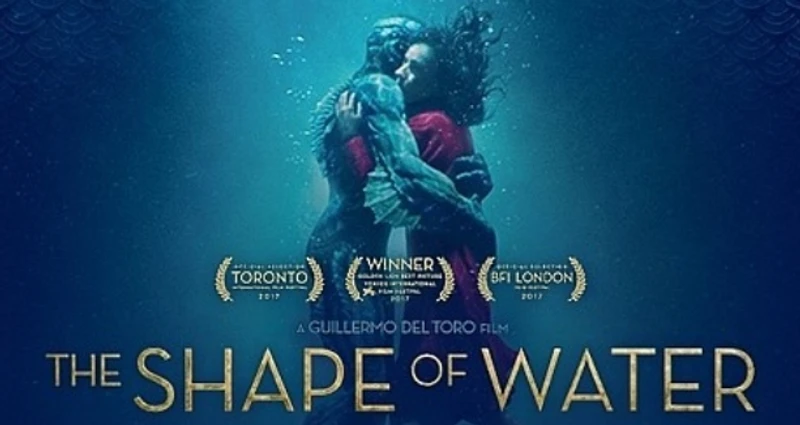The Shape of Water (2017)

Guillermo del Toro’s The Shape of Water (2017) is a visually mesmerizing and emotionally evocative fantasy romance set in Cold War-era Baltimore. It follows the story of Elisa Esposito (Sally Hawkins), a mute janitor at a government research facility, who forms an unlikely bond with an amphibious creature (Doug Jones) held captive for experimentation. This Oscar-winning film defies traditional genre boundaries, blending fairy-tale romance, dark fantasy, and Cold War thriller to create a unique cinematic experience.
Elisa’s life is one of quiet routine, punctuated by her friendship with her neighbor Giles (Richard Jenkins), a closeted artist, and her co-worker Zelda (Octavia Spencer), a lively and supportive confidante. When the facility acquires the amphibious creature, Elisa is drawn to him, sensing a shared loneliness and longing. Over time, their silent communication blossoms into a profound connection that transcends language, species, and societal norms. Del Toro’s attention to detail is evident in their wordless interactions, where Elisa’s empathy and the creature’s curiosity create a believable, touching romance.
Sally Hawkins’s performance as Elisa is transformative. With no spoken dialogue, she conveys emotion through subtle expressions and gestures, making Elisa’s love for the creature feel authentic and deep. Doug Jones, as the amphibious man, brings a sense of vulnerability and wonder to his character, making the creature more than just a monster but a misunderstood being yearning for freedom. Michael Shannon’s portrayal of Colonel Strickland, the ruthless government official who views the creature as a mere asset, adds tension and conflict, creating a palpable sense of urgency to Elisa’s plan to free her love.
Visually, The Shape of Water is breathtaking, with del Toro using color, light, and water imagery to evoke an otherworldly feel. The film’s cinematography (by Dan Laustsen) captures the retro yet dreamlike atmosphere, with rich greens and blues that enhance the sense of being submerged in Elisa’s world, one filled with fantasy and hidden beauty. The creature’s design is both haunting and alluring, reflecting del Toro’s love for classic monster movies and his signature ability to make the grotesque beautiful.
The movie also explores themes of otherness and acceptance, resonating with those who feel marginalized. Each of the central characters struggles with isolation or rejection – Elisa for her disability, Giles for his sexuality, Zelda for her race, and the creature for his alien nature. Through their friendship and mutual support, they find solace, and del Toro subtly critiques societal norms that stigmatize those who differ from the mainstream.
Alexandre Desplat’s enchanting score further enhances the film’s mood, with soft, lilting melodies that emphasize the story’s fairy-tale quality. The music, like the film itself, is tender and haunting, drawing viewers into the dreamlike world that del Toro has crafted.
Ultimately, The Shape of Water is a celebration of love in its purest form, unbound by words, appearances, or societal approval. It’s a story of two souls who connect against all odds, finding beauty and acceptance in one another. Del Toro’s masterpiece is a heartfelt reminder that love can be found in the most unexpected places, and that true connection is a matter of the heart, not the mind.











